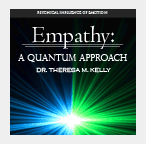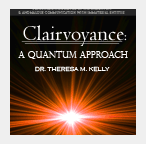Extrasensory Perception
Parapsychology Articles, Papers and Books
Home > Articles > Psychical Phenomena > Extrasensory Perception
![]()
|
| NEWSLETTERS |
| Get the best from QPsychics.com in your inbox! |
|
| PARAPSYCHOLOGY ORGANIZATIONS |
"With confidence in the importance of utilizing the investigative mode of the established sciences in order to inquire into the authenticity and to potentially explain the nature of psychical phenomena."  |
 |
 |
 |
 |
Sensation, Perception, and Extrasensory Perception
Extrasensory perception (ESP) is defined as the reception of information not gained through the recognized physical senses, but sensed by the mind. To comprehend accurately what extrasensory perception is and is not, first one has to define and analyze both sensation and perception. Sensation and perception are defined as stages of sensory processing in human and animal systems. These senses vary in modality such as vision, auditory, etc. They are stages classified as psychological, rather than anatomical or physiological. This is because processes in the brain affect the perception of a stimulus. Includes pertaining to these subject areas are illusions such as motion aftereffect, color constancy, depth perception, and auditory illusions. In addition, sensation is a function of the low-level biochemical and neurological events in which begin with the impinging of a stimulus upon the receptor cells of a sensory organ (e.g. eyes, ears, skin, etc.). Perception on the other hand, includes the mental processes or states that are reflected in statements such as “I see a rectangular red vase,” whereby representing awareness or the comprehension of the practical cause of the sensory input. Otherwise stated, sensation is defined as the first stages in the functioning of senses to represent stimuli from environs, while perception is defined as a higher brain function regarding the interpretation of events and objects in environs. A sensory system is a component of the nervous system responsible for processing sensory information. They consist of sensory receptors (sensory nerve endings), neural pathways (connecting one component of the nervous system to another), and components of the brain involved in sensory perception. Commonly recognized sensory systems are those for vision, hearing, somatic sensation (touch), taste, and olfaction (smell). These systems are transducers from the physical environment to the environment of the mind. However, while it was once assumed that extrasensory perception is the result of an unknown sensory organ, evidence is contrary to sensory models. Sensory systems code for four features of detectable change whether the changes are internal or external. These four features of stimuli include type or modality, intensity, location, and duration. A sensory modality is a type of physical phenomenon that can be ‘sensed.’
Next Page 1 - 2
(Adapted from the book “A Quantum Approach Series” by Theresa M. Kelly, MsD.)
|
|||
Related Articles |
|||

